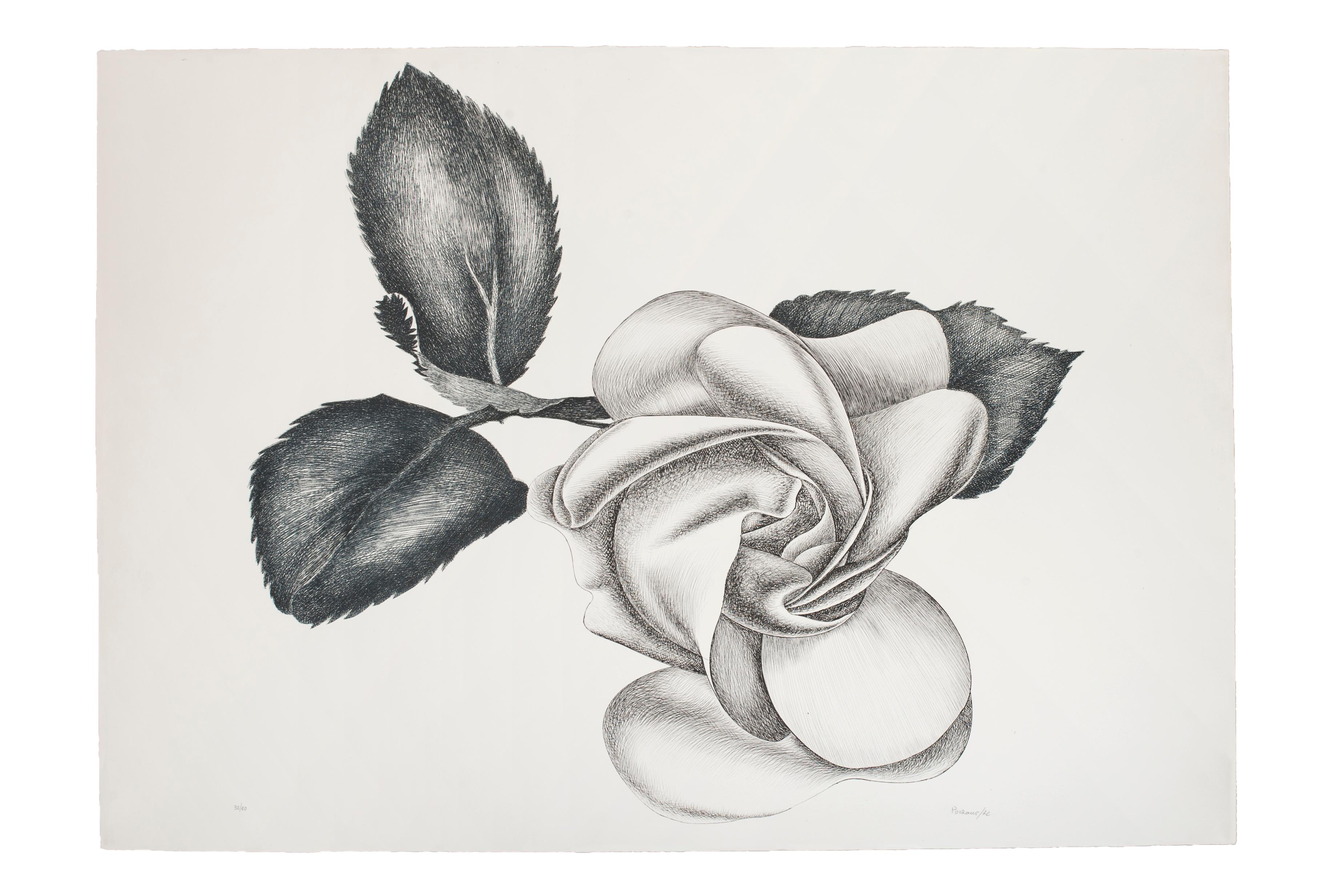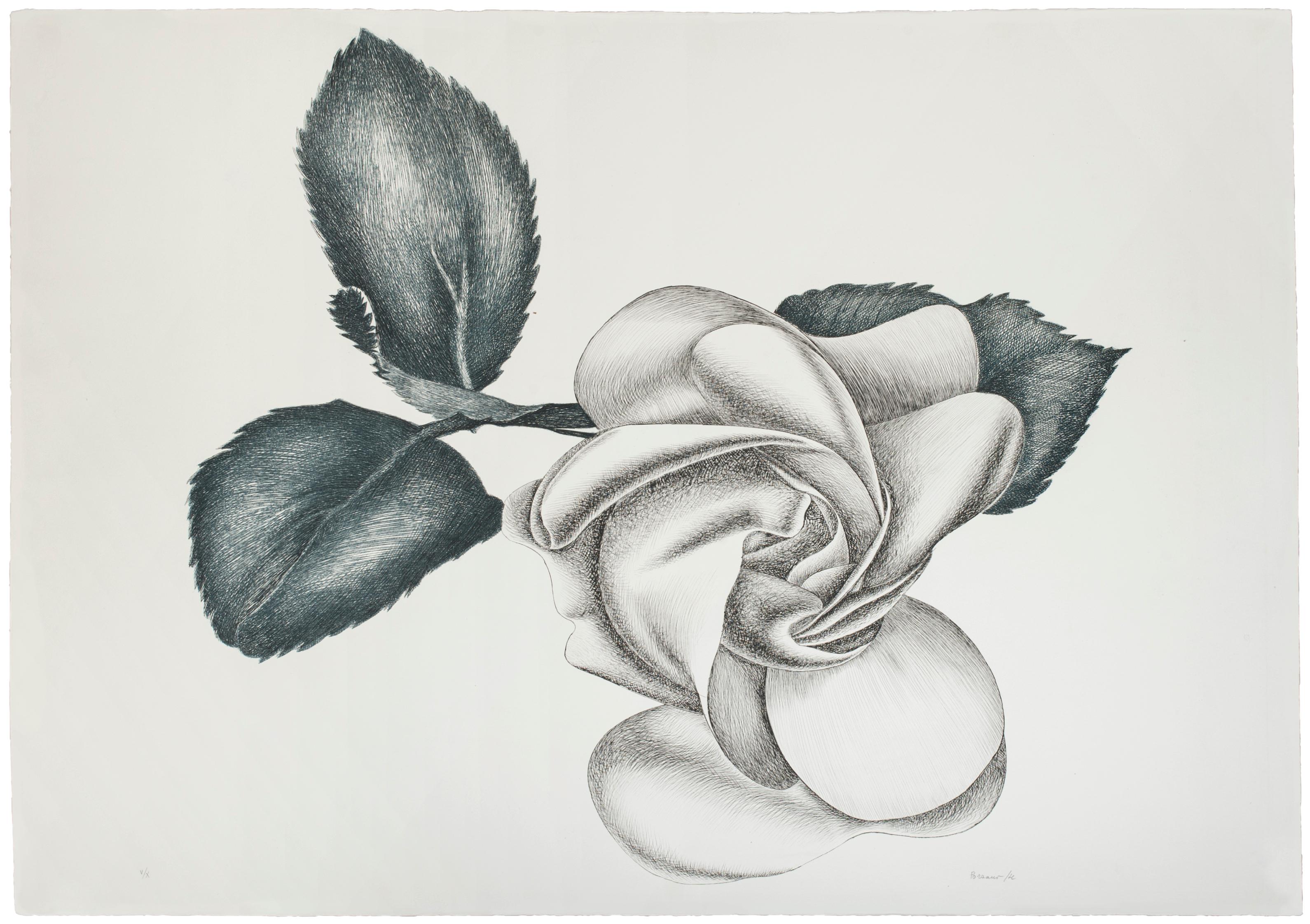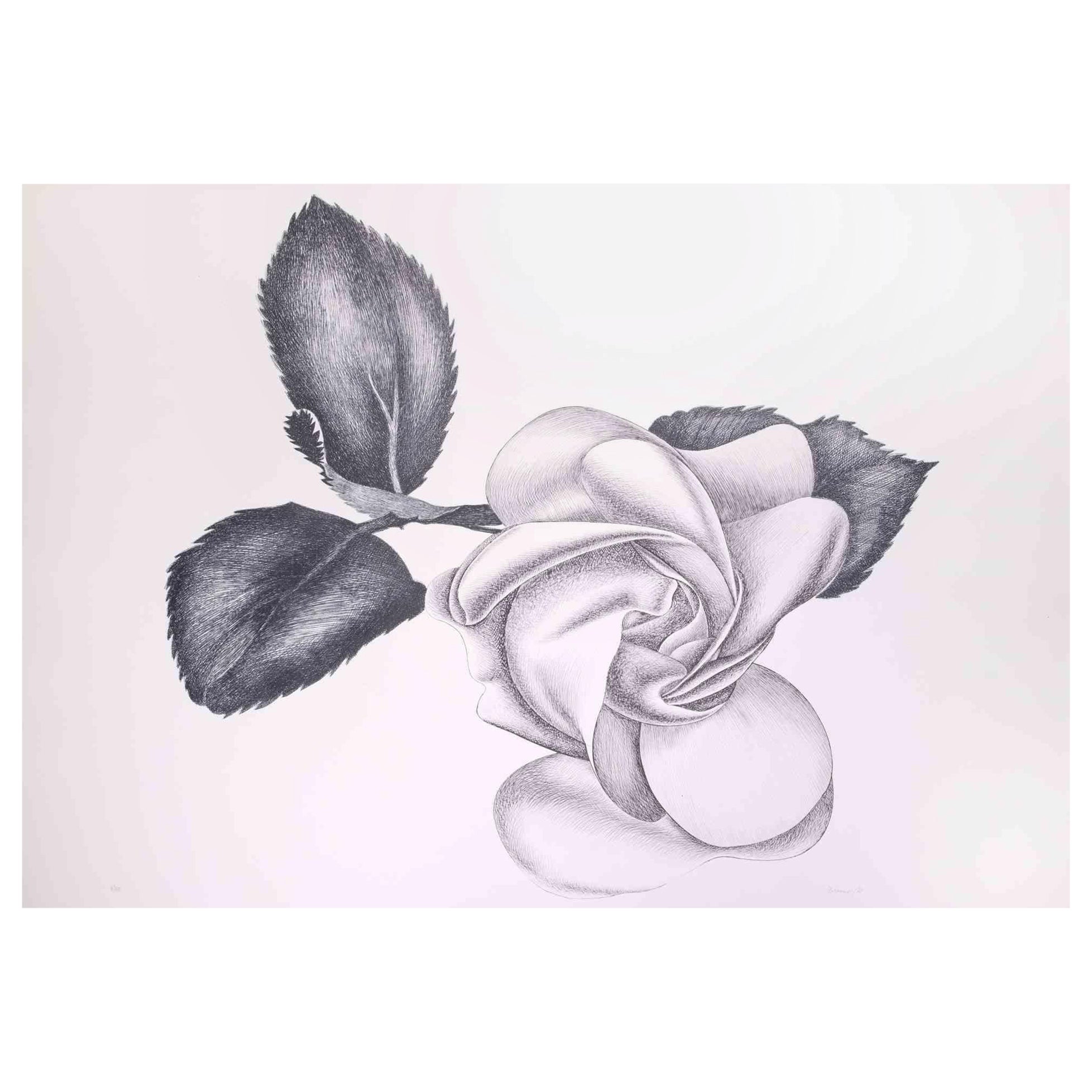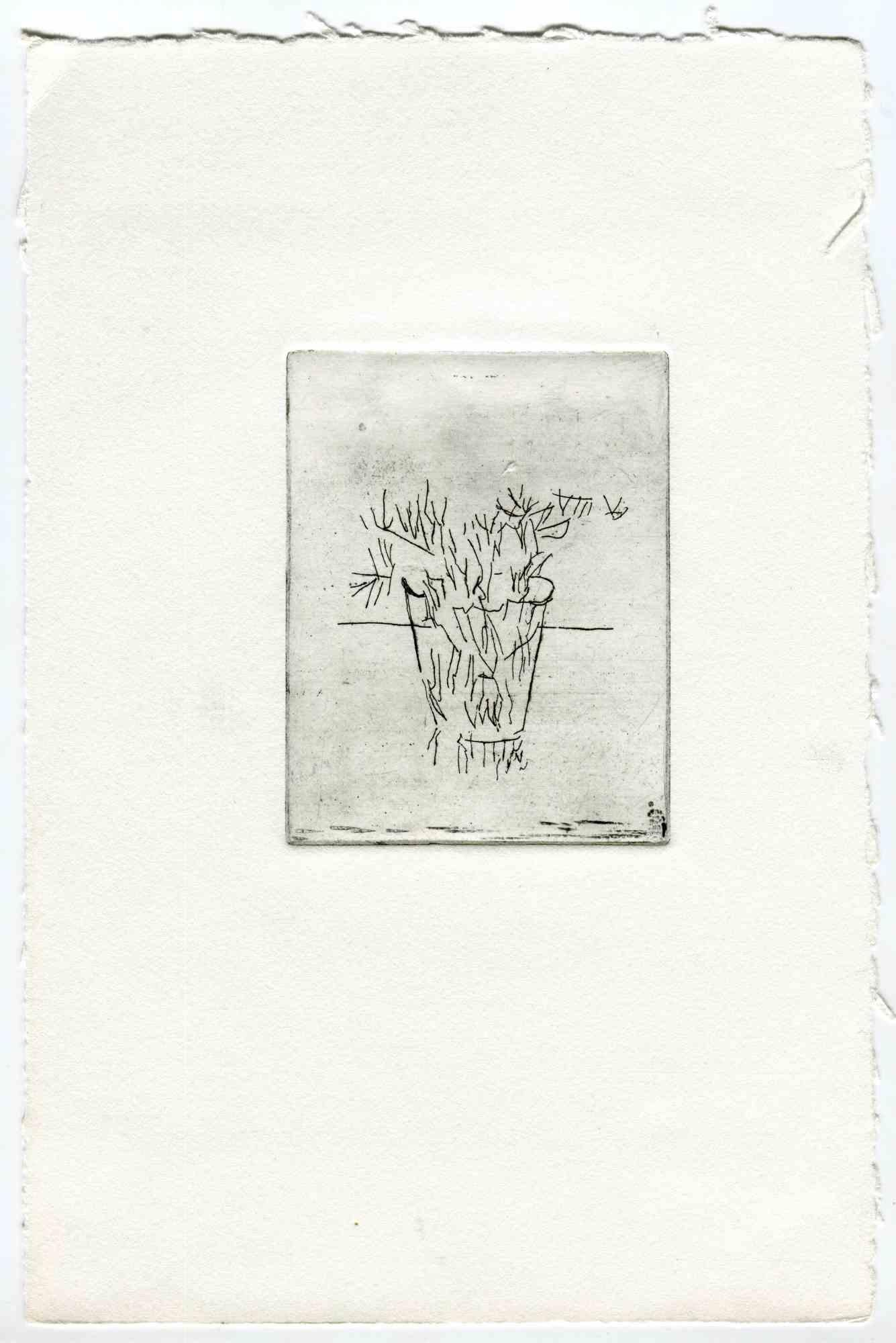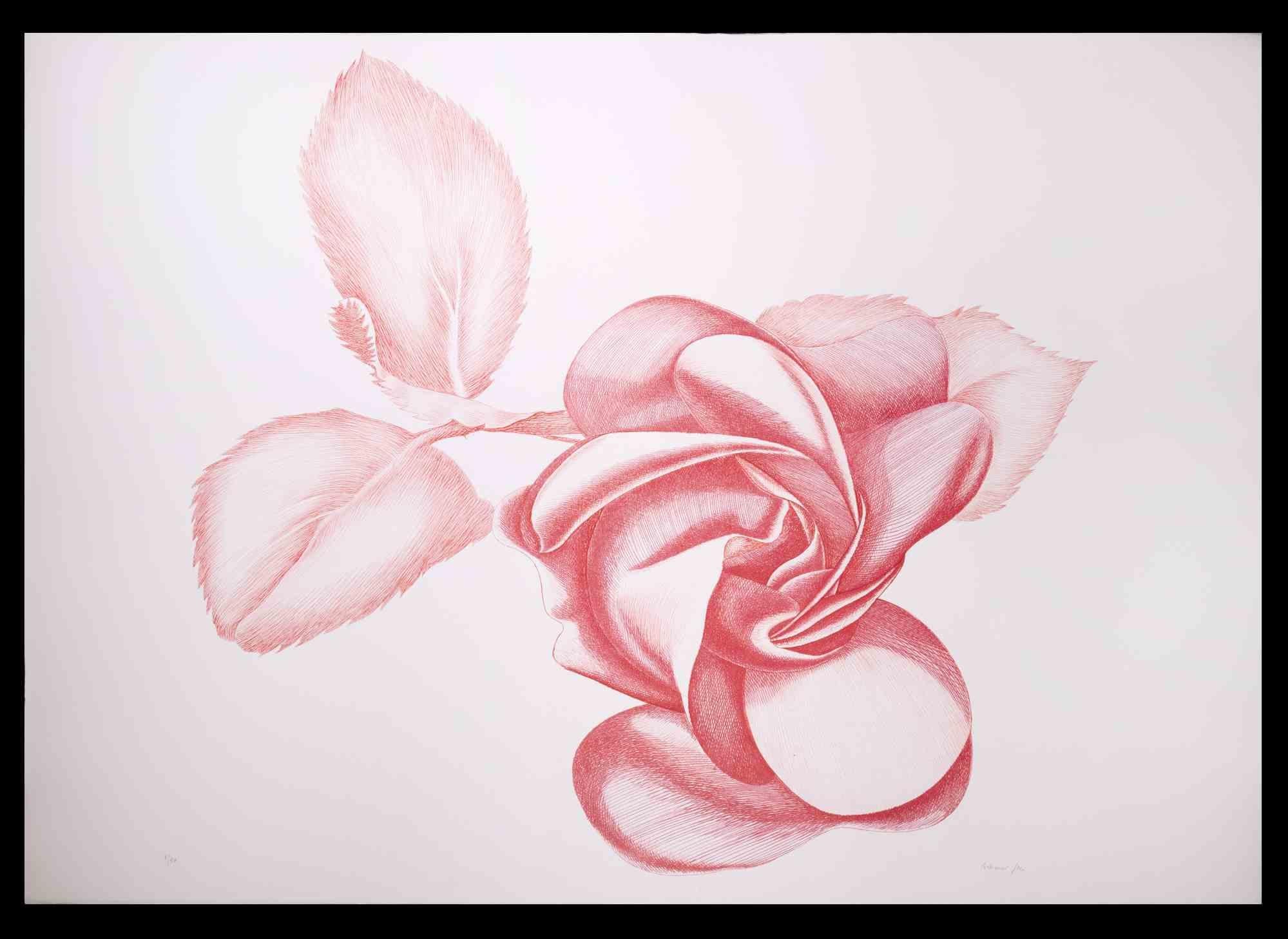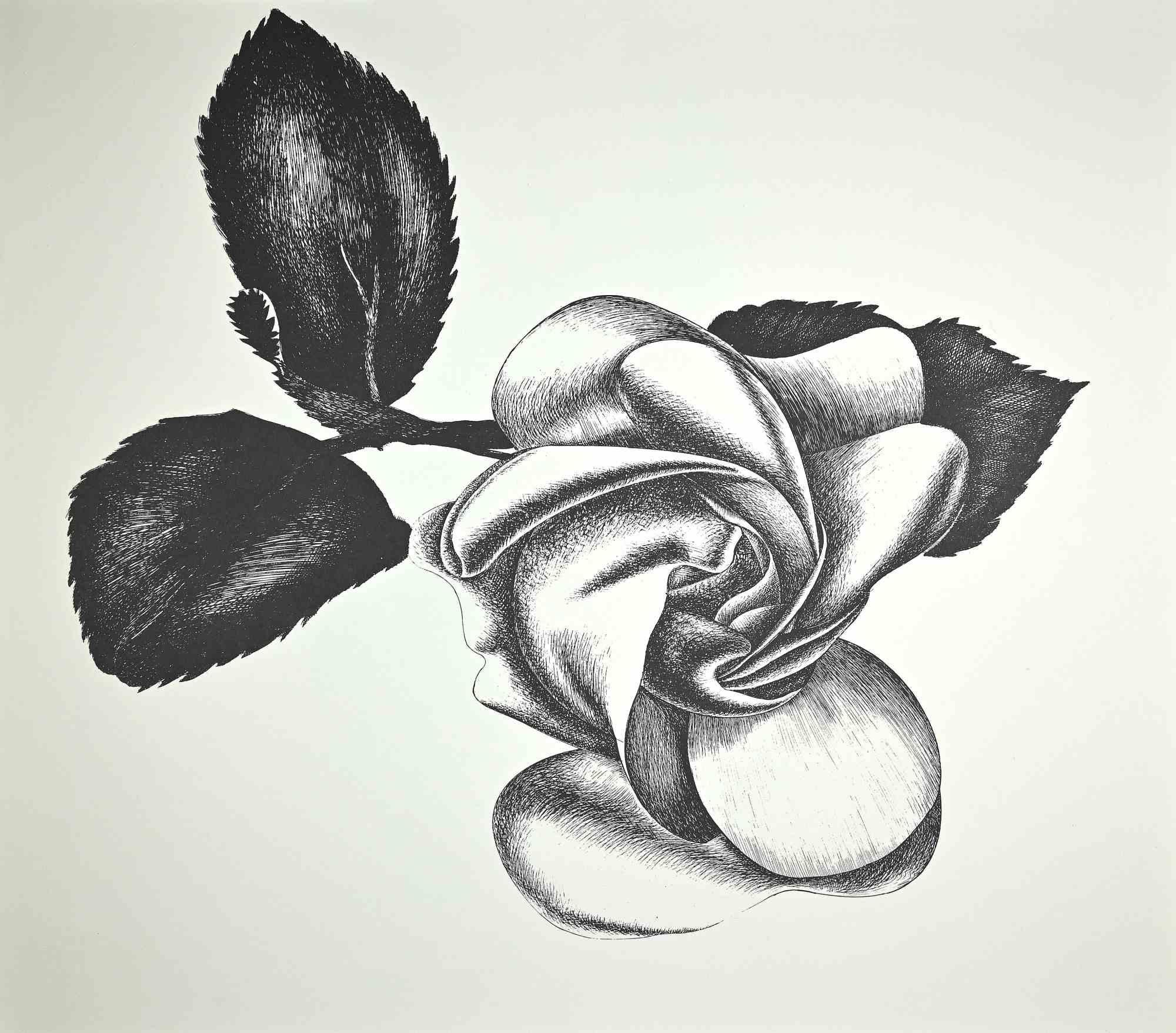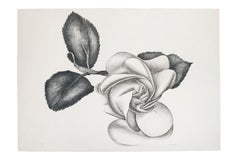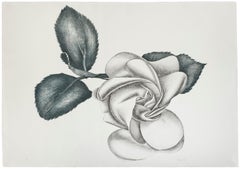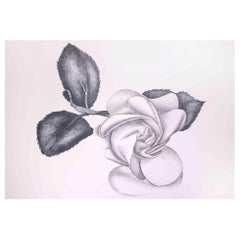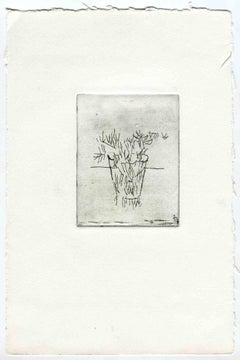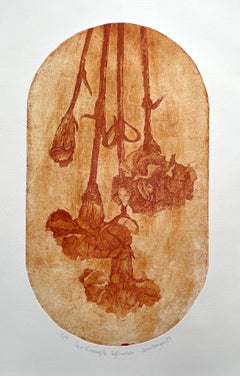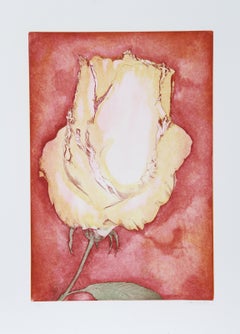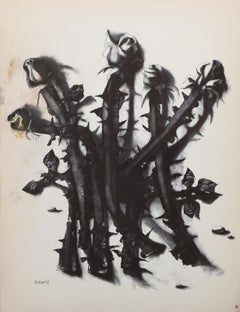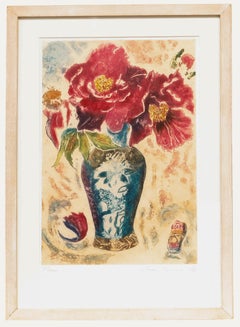Items Similar to A Rose - Original Drypoint - 1920s
Want more images or videos?
Request additional images or videos from the seller
1 of 5
UnknownA Rose - Original Drypoint - 1920s1920s
1920s
$328.87
£251.08
€280
CA$464.34
A$509.55
CHF 266.14
MX$6,092.24
NOK 3,371.14
SEK 3,144.23
DKK 2,133.03
About the Item
A Rose is an original modern artwork realized in the 1920s ca by an Italian engraving master.
Original drypoint on paper. Hand-signed by the artist on the lower right corner in pencil. Illegible signature. Numbered in pencil on the lower left corner: 8/25. Edition of 25 prints. Image Dimensions: 19.5 x 19.5 cm
Excellent conditions.
The work depicts the figure of a stylized rose with two geometrical shapes. On the right side a white shape and, on the lower side, a darker rectangular shape.
- Creation Year:1920s
- Dimensions:Height: 19.49 in (49.5 cm)Width: 13.39 in (34 cm)Depth: 0.04 in (1 mm)
- Medium:
- Movement & Style:
- Period:
- Framing:Framing Options Available
- Condition:Insurance may be requested by customers as additional service, contact us for more information.
- Gallery Location:Roma, IT
- Reference Number:Seller: M-1130371stDibs: LU65037479752
About the Seller
4.9
Platinum Seller
Premium sellers with a 4.7+ rating and 24-hour response times
1stDibs seller since 2017
7,820 sales on 1stDibs
Typical response time: 1 hour
- ShippingRetrieving quote...Shipping from: Roma, Italy
- Return Policy
More From This Seller
View AllBlack Rose - Original Etching by Giacomo Porzano - 1972
By Giacomo Porzano
Located in Roma, IT
Black Rose is a beautiful original black and white etching on paper, realized by the Italian artist Giacomo Porzano (1925-2006).
Hand-signed, dated and numbered in Arabic numerals b...
Category
1970s Contemporary Figurative Prints
Materials
Etching
Black Rose - Original Etching by Giacomo Porzano - 1972
By Giacomo Porzano
Located in Roma, IT
Black Rose is a beautiful original black and white etching on paper, realized by the Italian artist Giacomo Porzano (1925-2006).
Hand-signed, dated and numbered in Roman numerals by...
Category
1970s Contemporary Figurative Prints
Materials
Etching
Black Rose - Original Etching by Giacomo Porzano - 1970s
By Giacomo Porzano
Located in Roma, IT
Black Rose is an original modern artowork realized by the Italian artist Giacomo Porzano (1925-2006) in 1972
Black and white etching.
Hand-signed and dated on the lower right. Edit...
Category
1970s Contemporary Figurative Prints
Materials
Etching
The Vase - Original Etching and Drypoint - Mid-20th Century
Located in Roma, IT
The Vase is an original print in etching and drypoint on white paper realized by an anonymous artist of the Mid-20th Century.
In very good conditions.
The artwork created through co...
Category
Mid-20th Century Modern Figurative Prints
Materials
Drypoint, Etching
$216 Sale Price
20% Off
Red Rose - Original Etching by Giacomo Porzano - 1970s
By Giacomo Porzano
Located in Roma, IT
Red Rose is an original contemporary artwork realized by Giacomo Porzano in 1970s.
Colored etching
Hand-signed on the lower right.
Numbered on the lower left.
Edition 7/50.
Giac...
Category
1970s Contemporary Figurative Prints
Materials
Etching
Black Rose - Original Etching by Giacomo Porzano - 1970s
By Giacomo Porzano
Located in Roma, IT
Black Rose is an original etching realized by the Italian artist Giacomo Porzano (1925-2006).
In good condition.
This contemporary piece is depicted through strong lines and intens...
Category
1970s Contemporary Figurative Prints
Materials
Etching
$230 Sale Price
30% Off
You May Also Like
Original Contemporary Etching, Roses, Flowers
Located in AIX-EN-PROVENCE, FR
Work : Original Etching, Gravure, Edition of 9. Handmade artwork. Ready to Hang.
Medium : Etching and Aquatint
Artist : Deniz Bayav
Subject : Sen Karanfile Eğilimlisin (Title)
Sign...
Category
21st Century and Contemporary Contemporary Still-life Prints
Materials
Archival Paper, Etching, Aquatint
Yellow Rose, Surrealist Aquatint Etching by Hank Laventhol
Located in Long Island City, NY
Hank Laventhol, American (1927 - 2001) - Yellow Rose, Year: circa 1980, Medium: Aquatint Etching, signed and numbered in pencil, Edition: 300, AP XXXV, Image Size: 24 x 16.5 inch...
Category
1980s Surrealist Still-life Prints
Materials
Aquatint, Etching
Roses, Surrealist Lithograph by Morris Broderson
Located in Long Island City, NY
Morris Broderson, American (1928 - 2011) - Roses, Portfolio: The Atelier Portfolios, Number One: Morris Broderson, Year: 1961, Medium: Lithograph, signed and dated in the plate lo...
Category
1960s Surrealist Still-life Prints
Materials
Lithograph
Jenny Devereux (b.1945) - 20th Century Etching, Peony
Located in Corsham, GB
A vibrant 20th-century etching with hand colouring of a vase of peonies by the printmaker and painter Jenny Devereaux. She etches directly onto copper plates and prints onto fine Jap...
Category
20th Century Still-life Prints
Materials
Etching
Modern British ink pen on paper work of a rose by Edmond Xavier Kapp
Located in Petworth, West Sussex
Eduard Xavier Kapp (British, 1890 – 1978)
Rose in bottle
Ink pen
Signed, inscribed and dated ‘For Paby, no7 out of 7 Kapp. 59’ (lower edge)
11 x 8.1/4 in. (28 x 21 cm.)
Edmond Kapp ...
Category
20th Century Modern Still-life Drawings and Watercolors
Materials
Paper, Ink
G.H. Rothe, "Glass Rose, " hand signed, mezzotint
By G.H. Rothe
Located in Chatsworth, CA
G.H. Rothe
"Glass Rose'
Mezzotint
Hand signed and titled in pencil by the artist
Numbered 114/150 from the edition of 150
30 x 30 inches
unframed
Category
1990s Modern Still-life Prints
Materials
Mezzotint
More Ways To Browse
Italian Engraving
Ferdinand Oscar Finne On Sale
Fragrance Of Park City
Frances Swigart
Francisco Goya The Prisoner
Frank Cassara
Fred Larson
Frederic Remington Lithographs
Frederic Vidalens
Fritz Eichenberg. On Sale
Fudo Myoo
Fuller Potter
G Hoffman
Gaetano Dura On Sale
George Grosz On Sale
George Jo Mess
Giovanni Battista Piranesi Vaso Di Marmo Antico Che Si Vede Nel Museo Capitolino Etching 1778
Grace Albee
